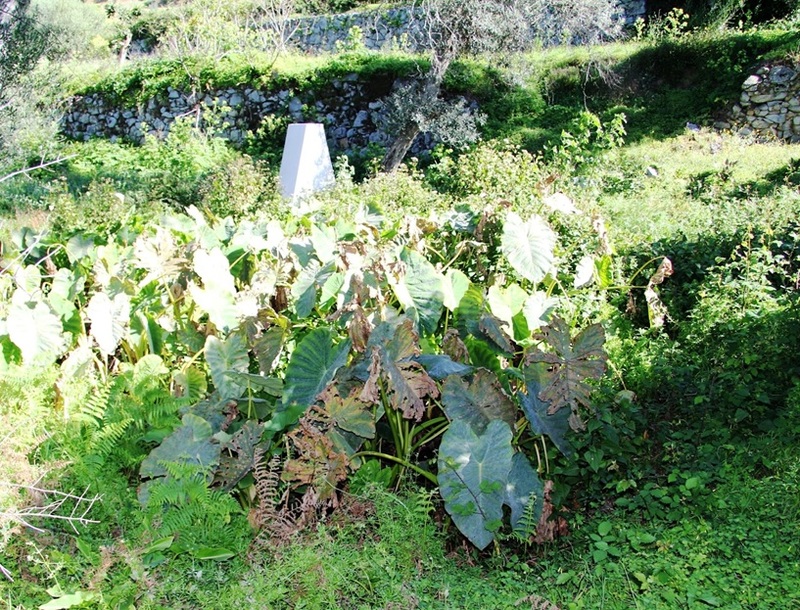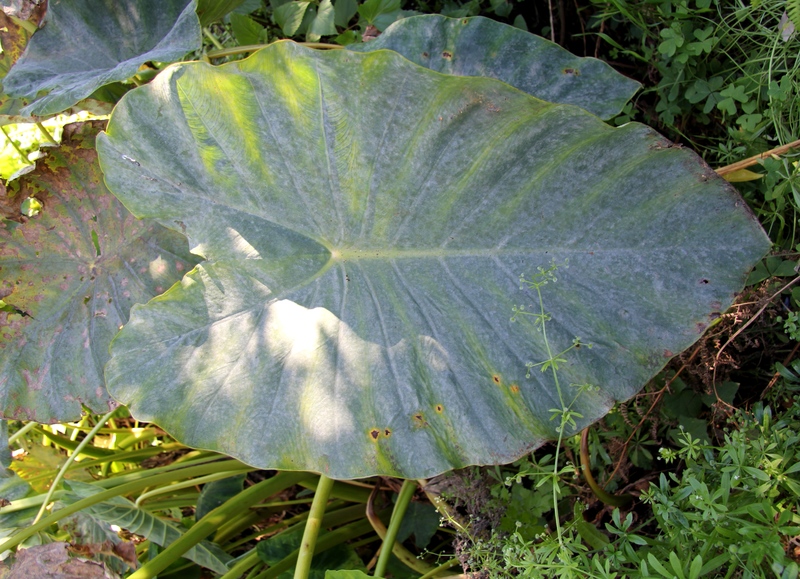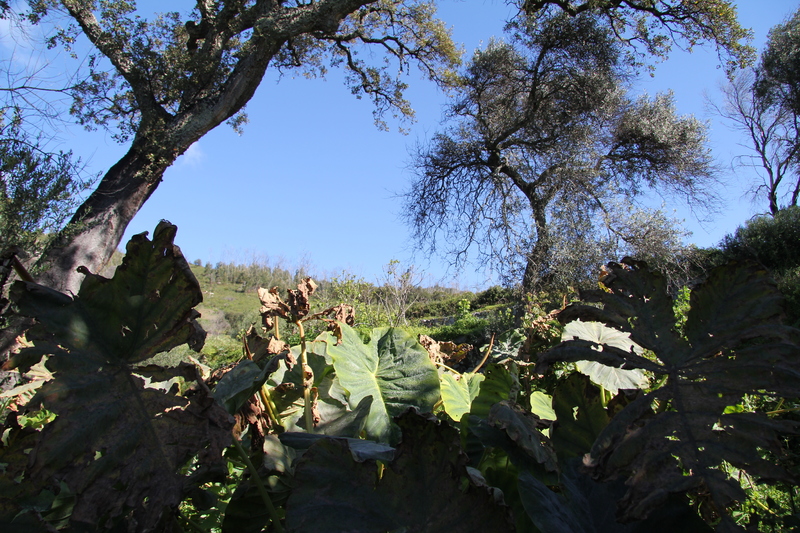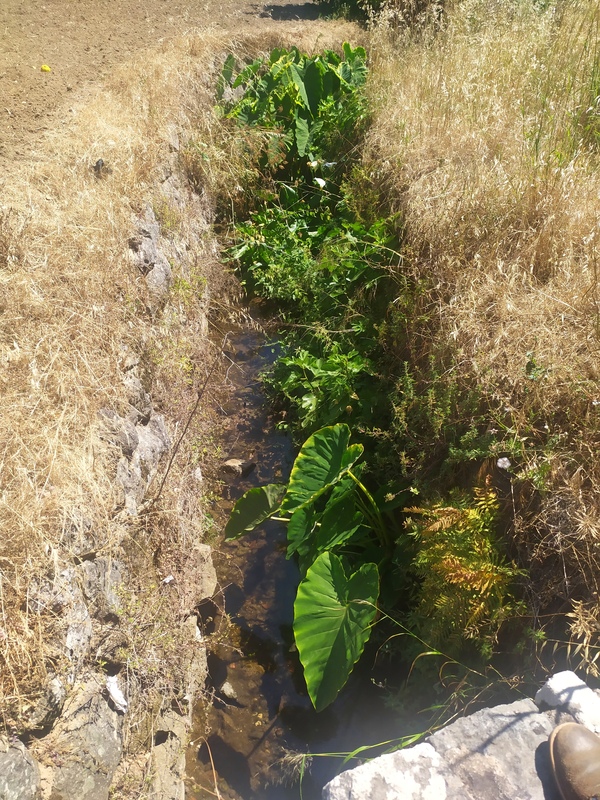Notas de campo #3 | Field notes #3 | Fornalha, Serra de Monchique | mar 2022
Título | Title
Notas de campo #3 | Field notes #3 | Fornalha, Serra de Monchique | mar 2022
Data | Date
3-5/3/2022
Notícia | News
Num pequeno barranco sombreado à beira da estrada de Eira Cavada à Fornalha encontrámos os inhames da serra. Um amigo, cuja família é oriunda da serra, e os nossos companheiros de conversa na noite anterior já nos tinham falado dos inhames de Monchique. Diz-se que os há bravos e cultivados. No passado, contaram-nos, ninguém aceitava que se sujassem os barrancos por causa dos cursos de água e dos inhames. As folhas largas e verdes avistadas a partir da janela do carro lembraram-nos imediatamente o que é descrito na Guiné-Bissau como manfafa (em crioulo guineense), da qual se come o tubérculo cozido e as folhas cozinhadas no caldo que se mistura com o arroz. Na bibliografia, o seu nome científico é Colocasia esculenta. Se os inhames da Serra de Monchique forem as manfafas da costa da Guiné, que caminhos e mãos os ligam?
At the side of the road that goes from Eira Cavada to Fornalha, in a narrow and shadowed gorge, we found the so-called inhames, yams. A friend, whose family is from the serra, as well as our peers in last night's chat, had already told us about the yams of Monchique. They mentioned the existence of domestic and wild ones. In the past, they told us, people did not want the gorges to be filthy in order to protect the natural springs and the yams. The large green leaves that we could see from the window of the car immediately reminded us of what is described in Guinea-Bissau as manfafa (in Guinean Kriol). The roots are edible and the leaves are chopped and cooked in the sauce that is spread on top of the boiled rice. Its scientific name in the literature is Colocasia esculenta. If the yams of Monchique are the same as the cocoyams of Guinea coast, which pathways and hands brought them there?
At the side of the road that goes from Eira Cavada to Fornalha, in a narrow and shadowed gorge, we found the so-called inhames, yams. A friend, whose family is from the serra, as well as our peers in last night's chat, had already told us about the yams of Monchique. They mentioned the existence of domestic and wild ones. In the past, they told us, people did not want the gorges to be filthy in order to protect the natural springs and the yams. The large green leaves that we could see from the window of the car immediately reminded us of what is described in Guinea-Bissau as manfafa (in Guinean Kriol). The roots are edible and the leaves are chopped and cooked in the sauce that is spread on top of the boiled rice. Its scientific name in the literature is Colocasia esculenta. If the yams of Monchique are the same as the cocoyams of Guinea coast, which pathways and hands brought them there?
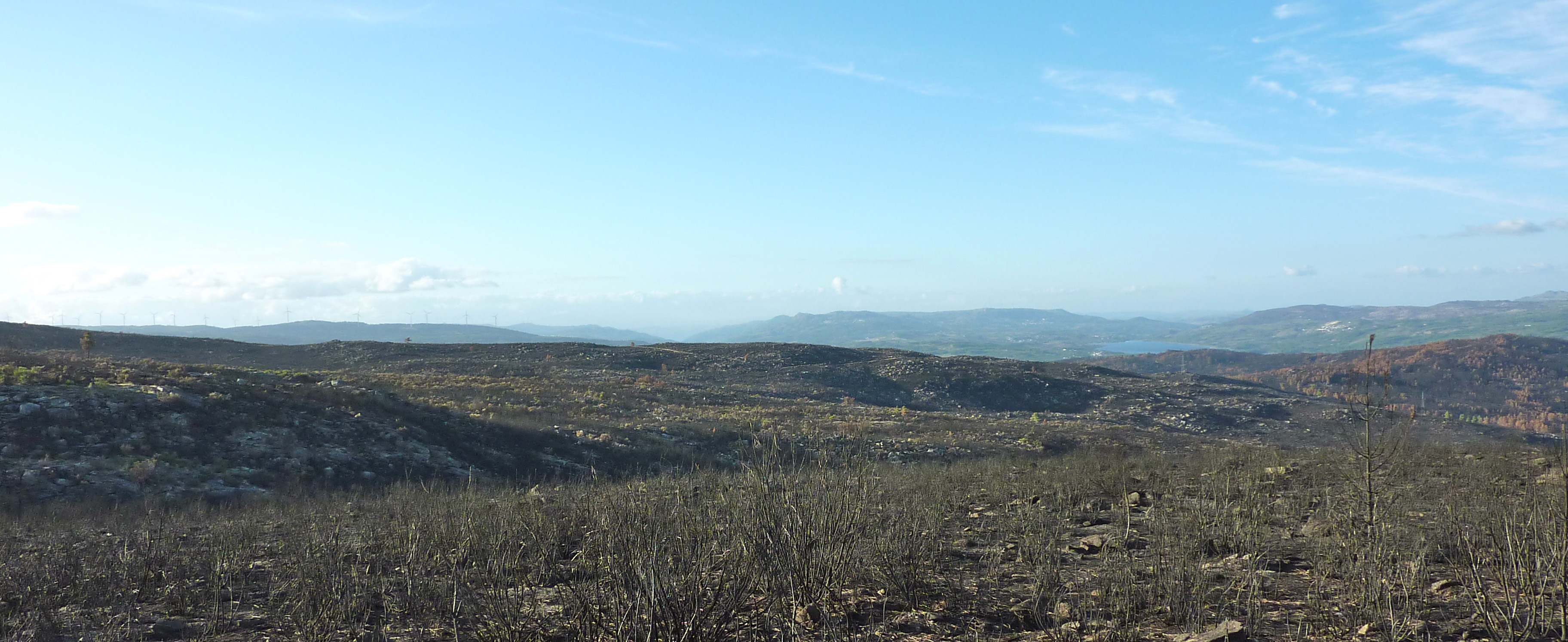
Serra da Lapa, 6 de agosto de 2020
